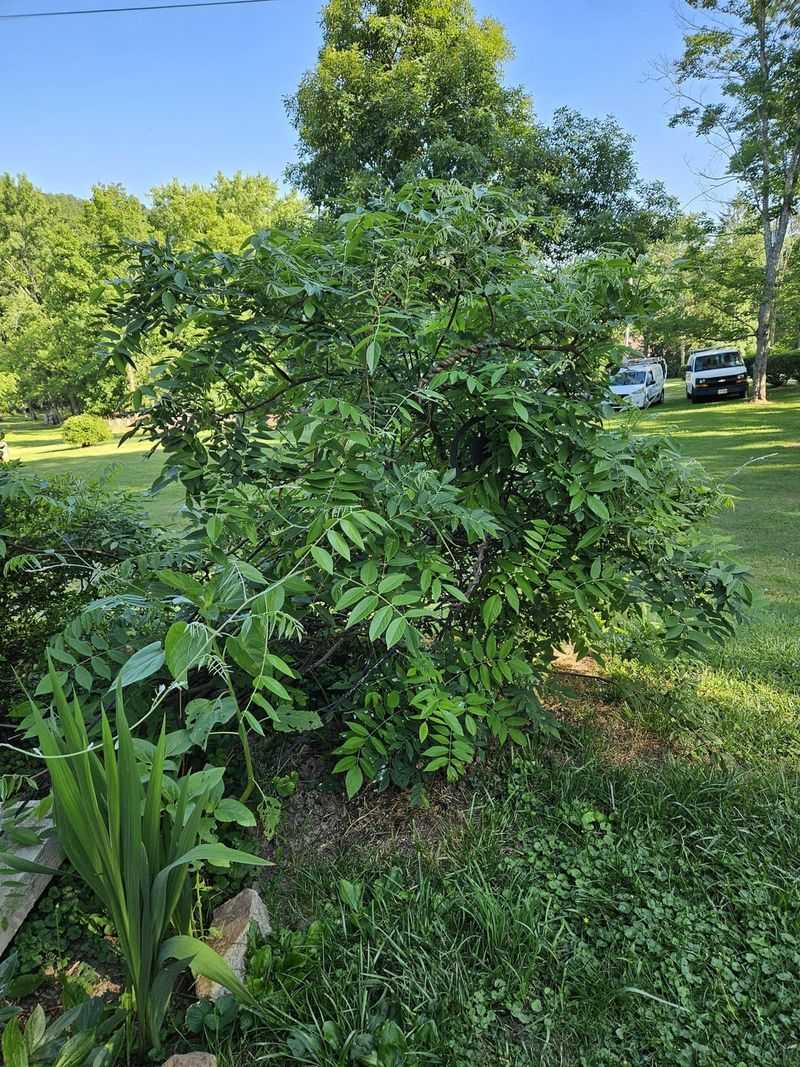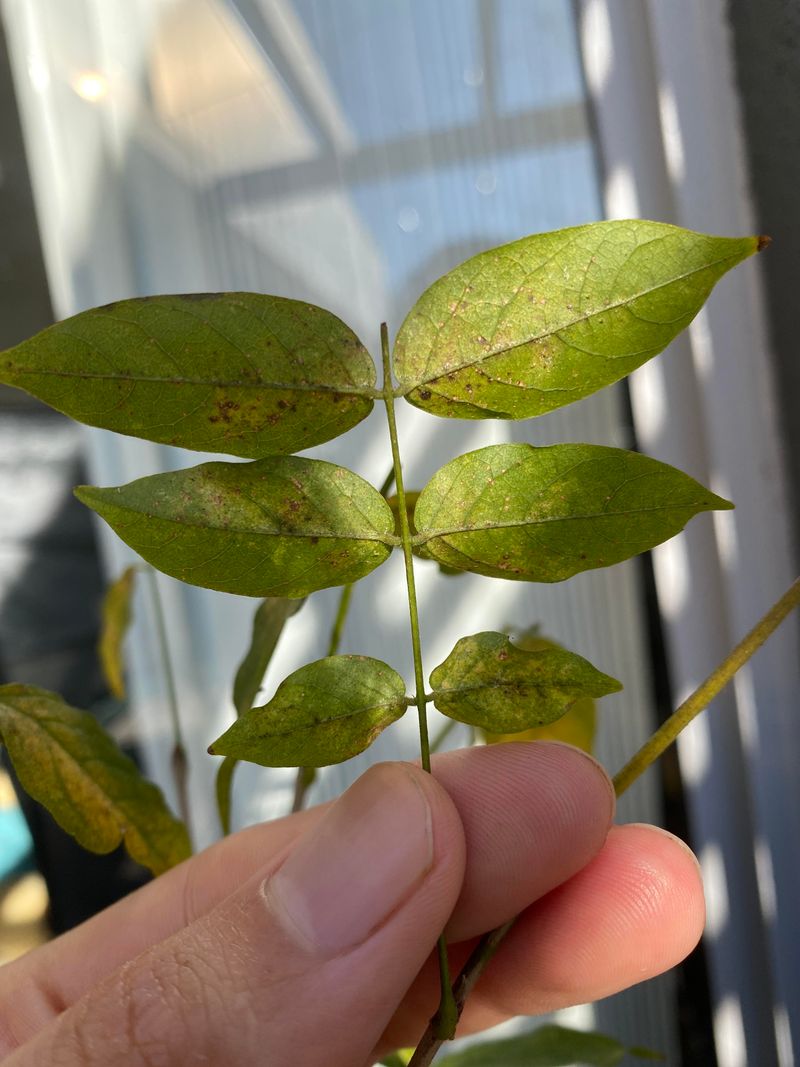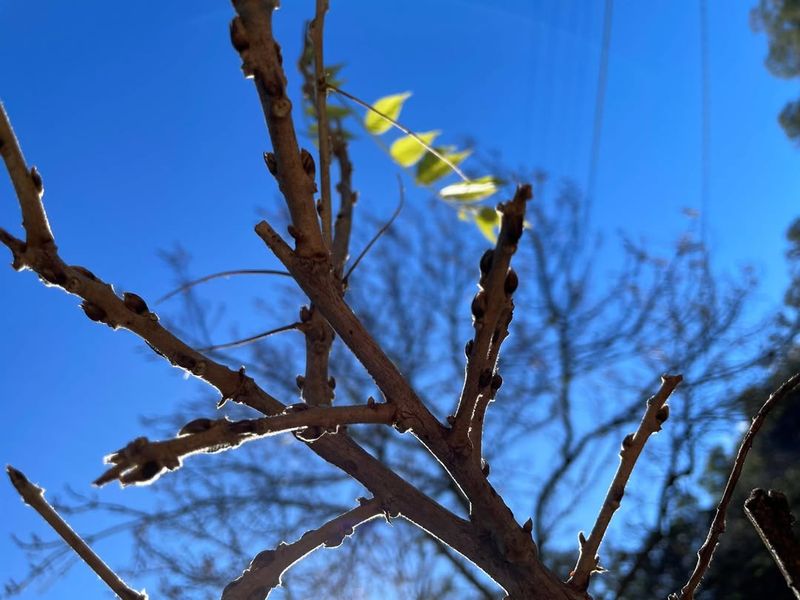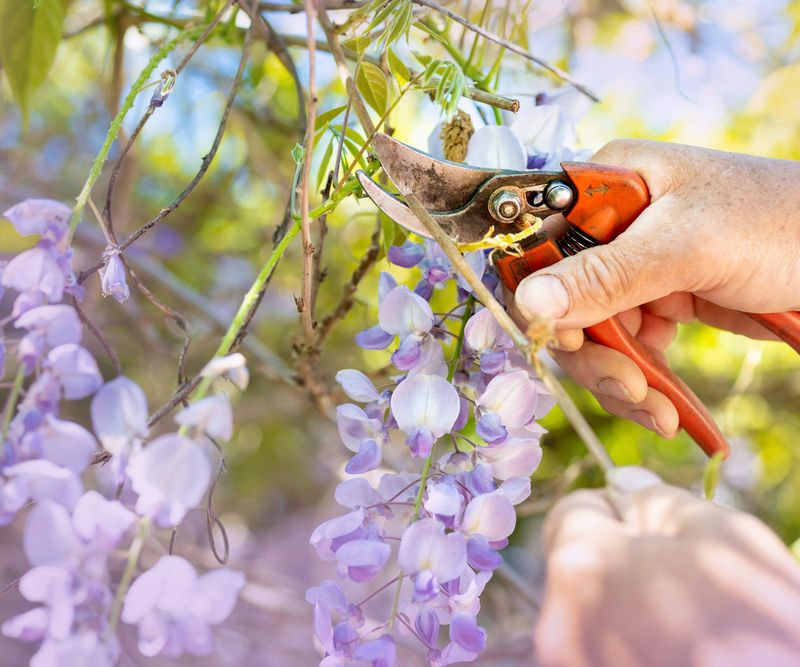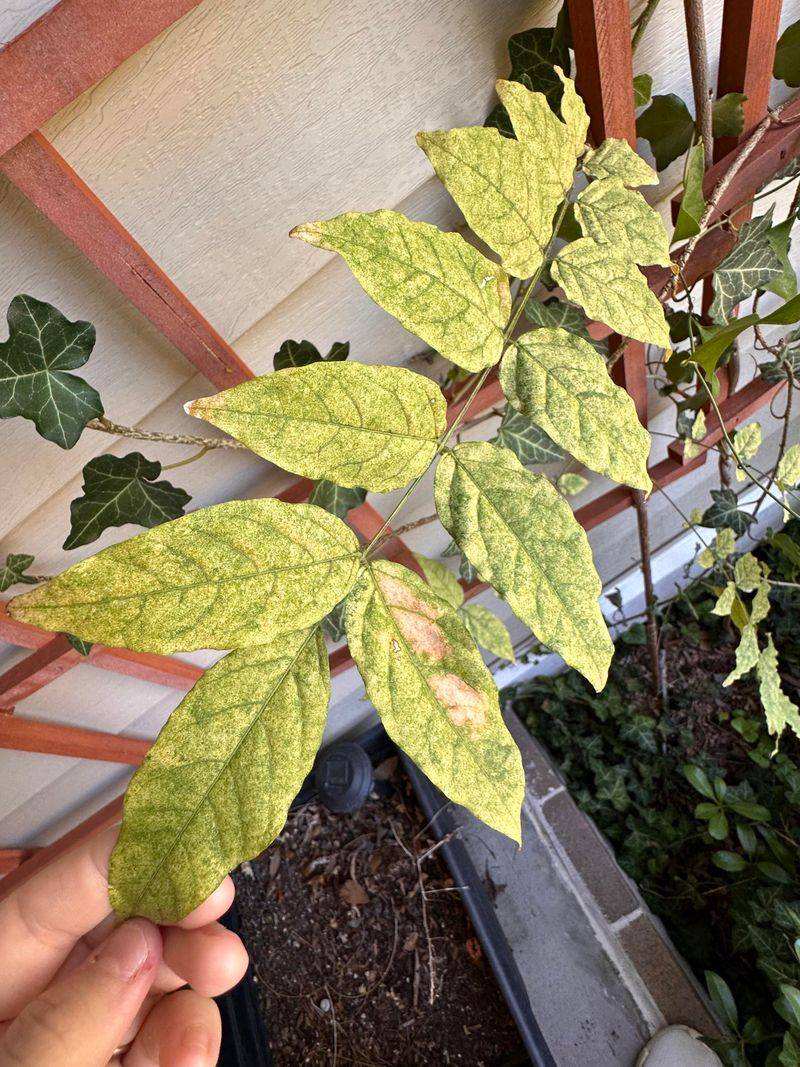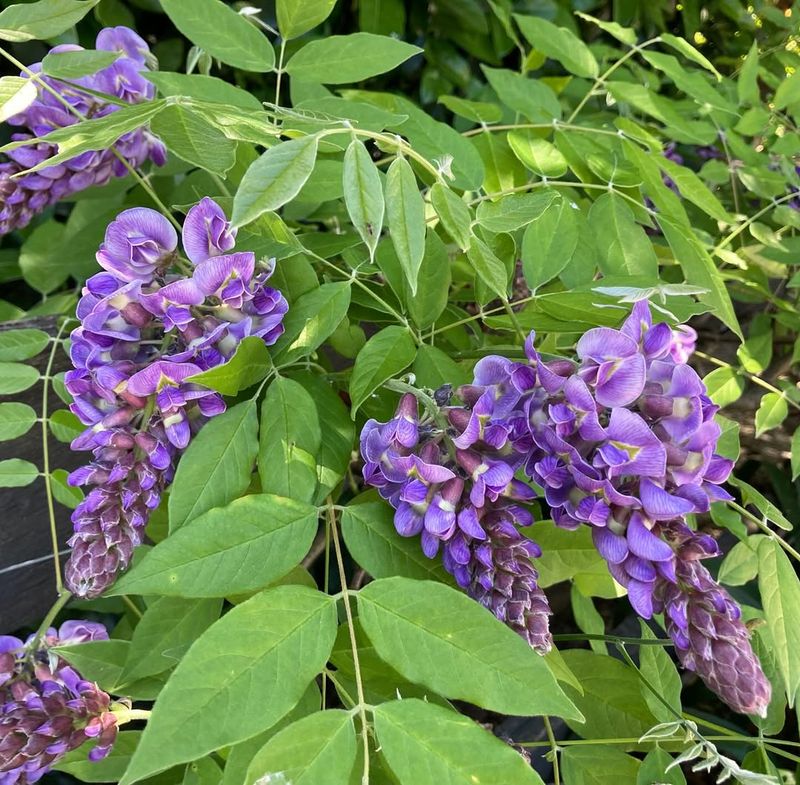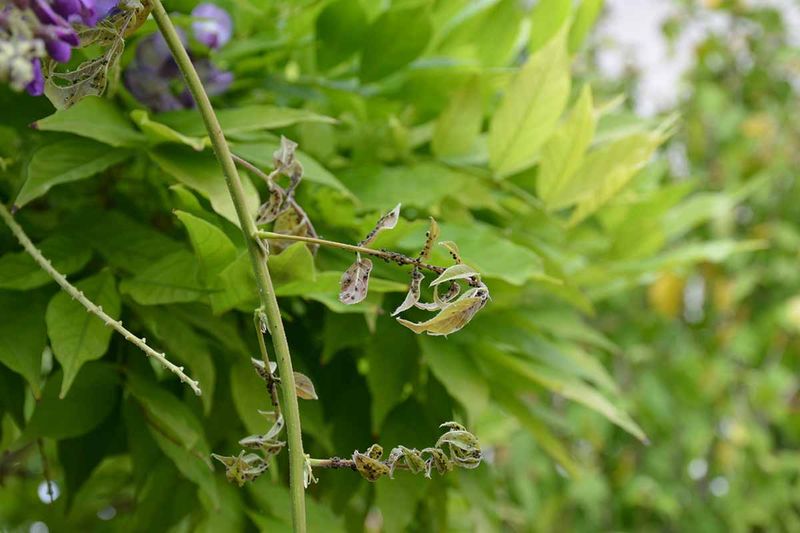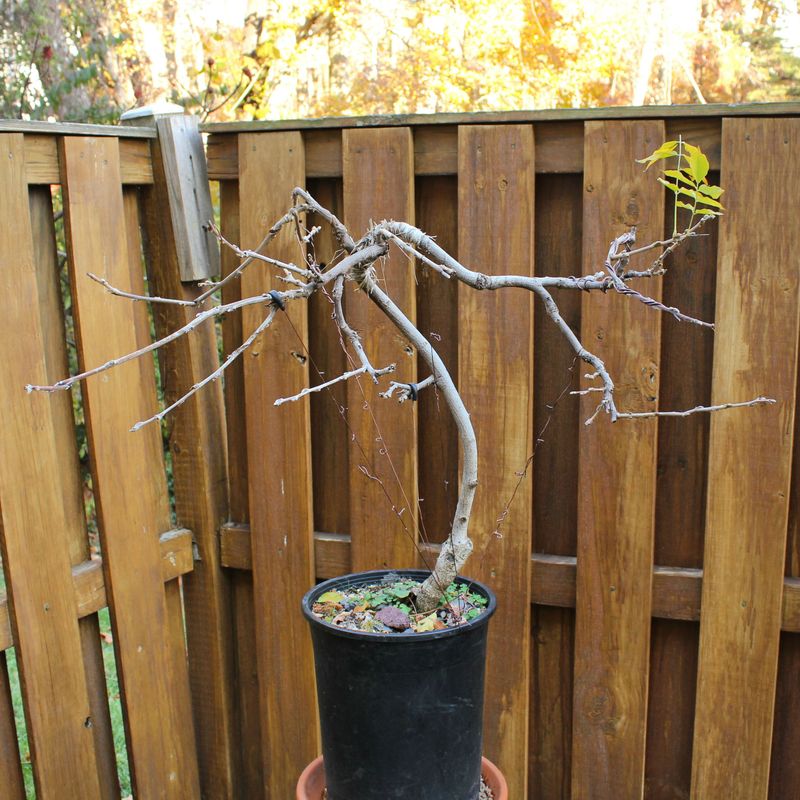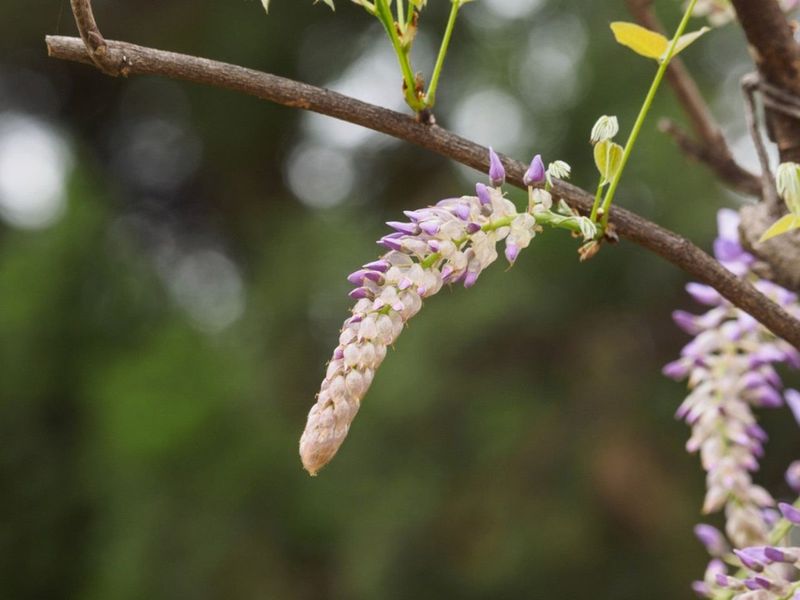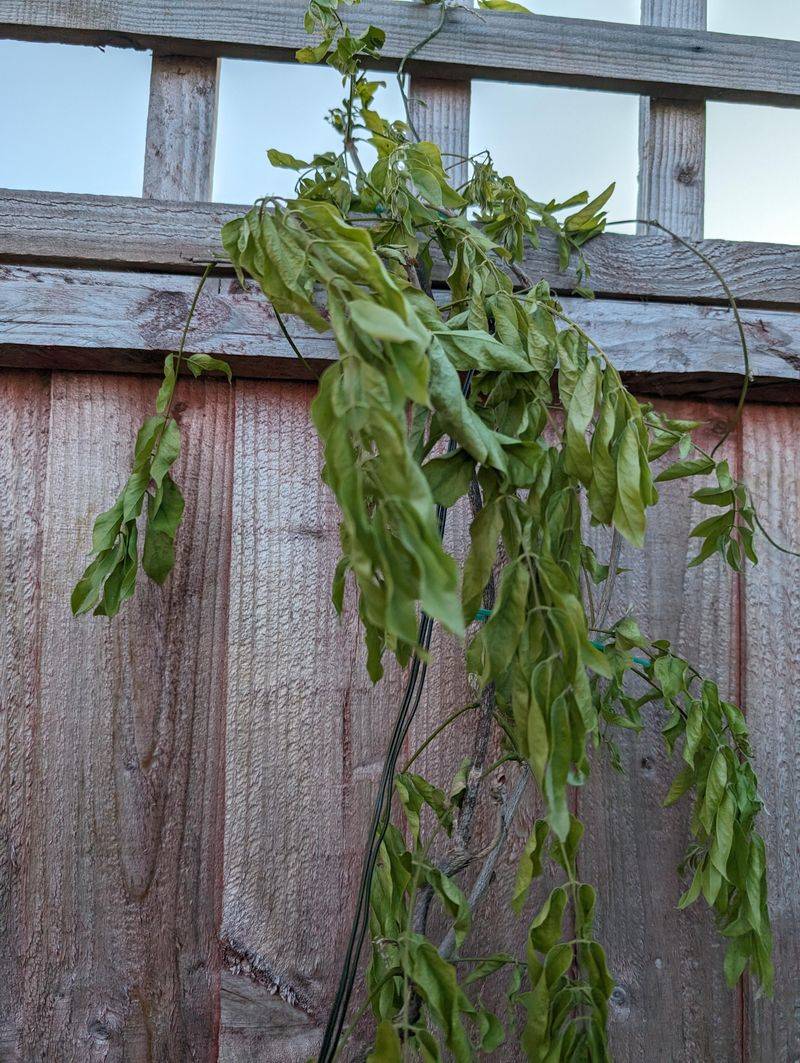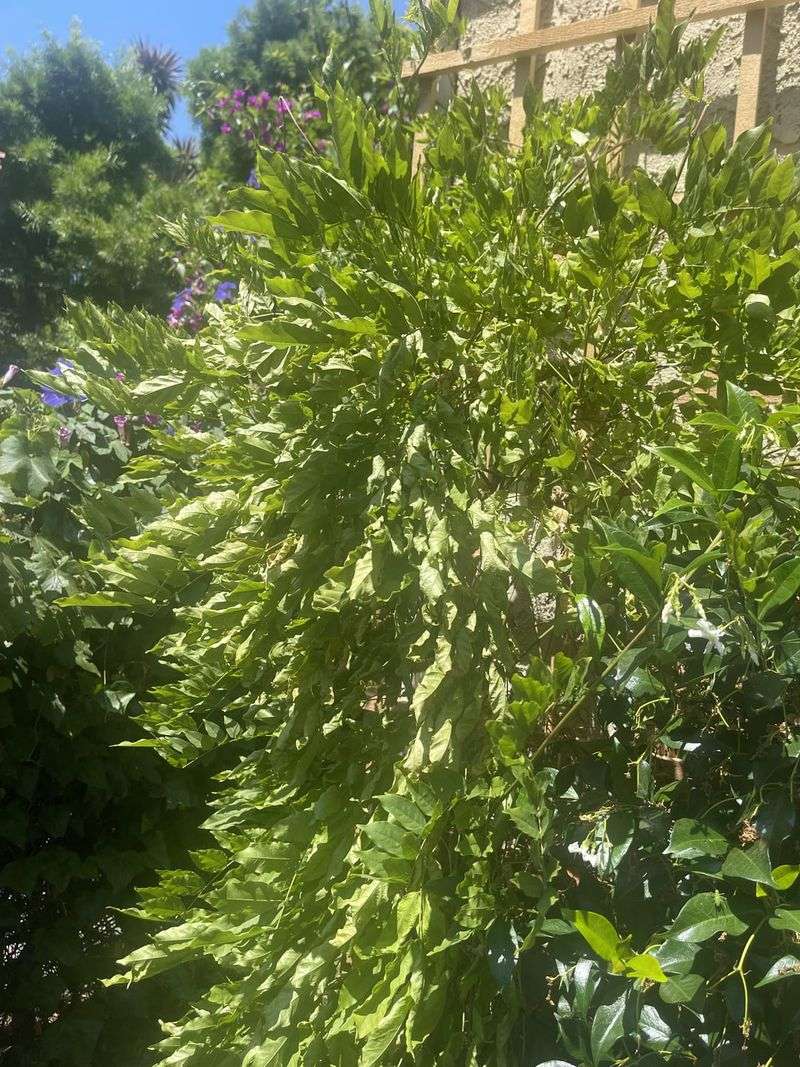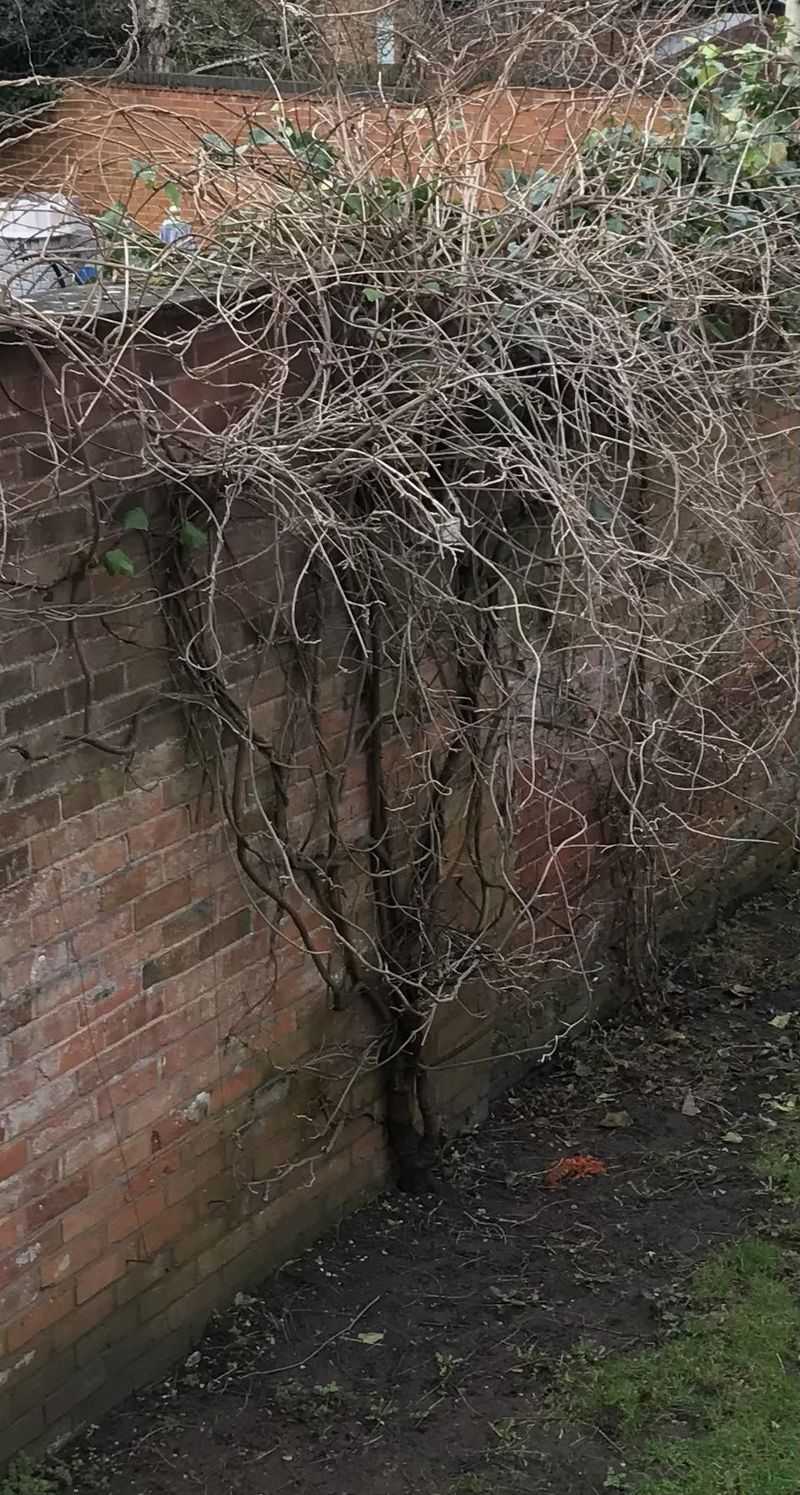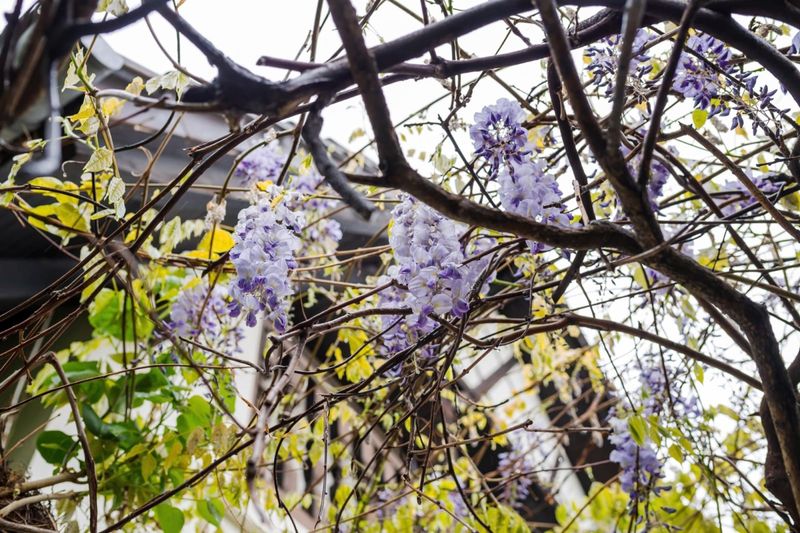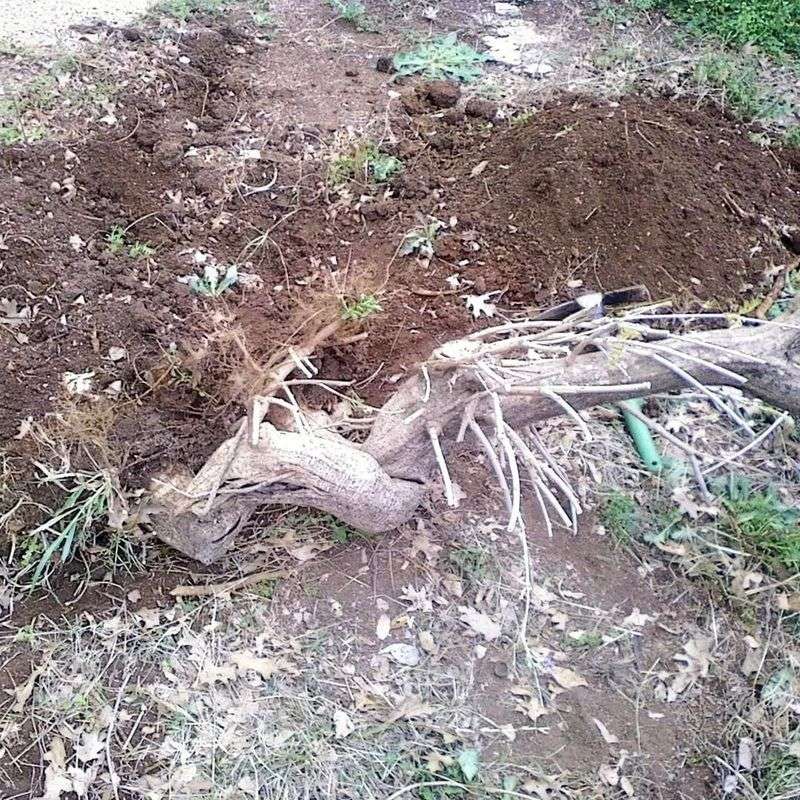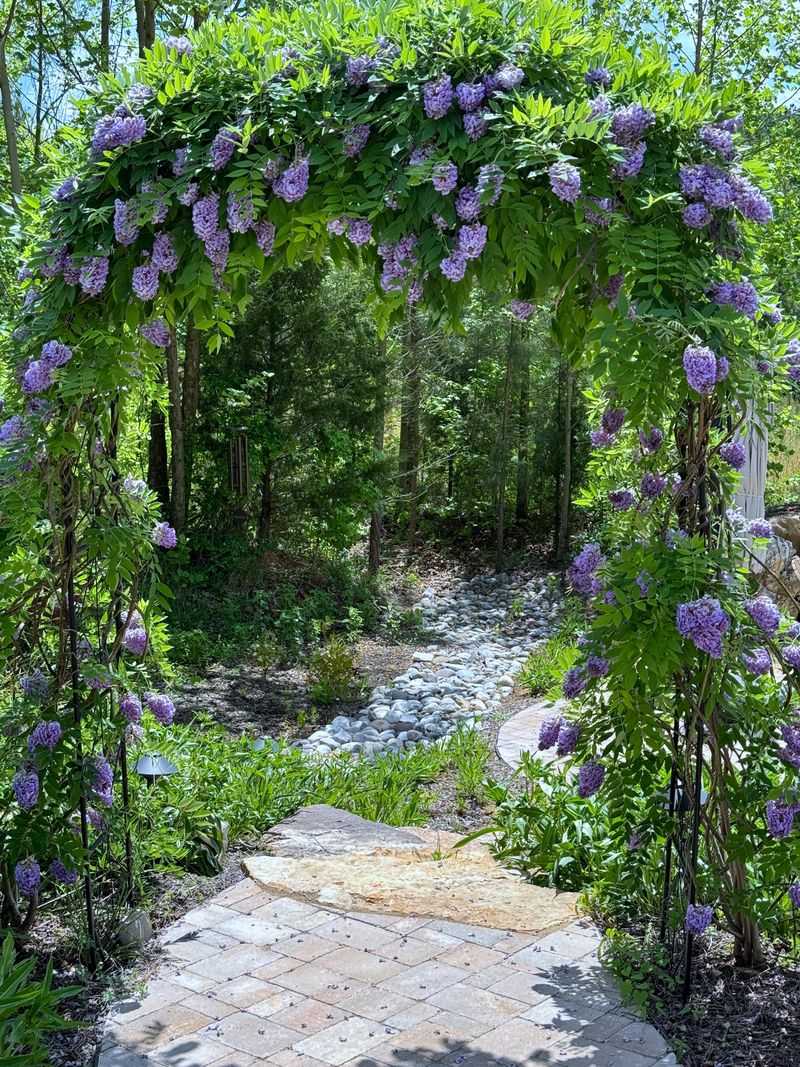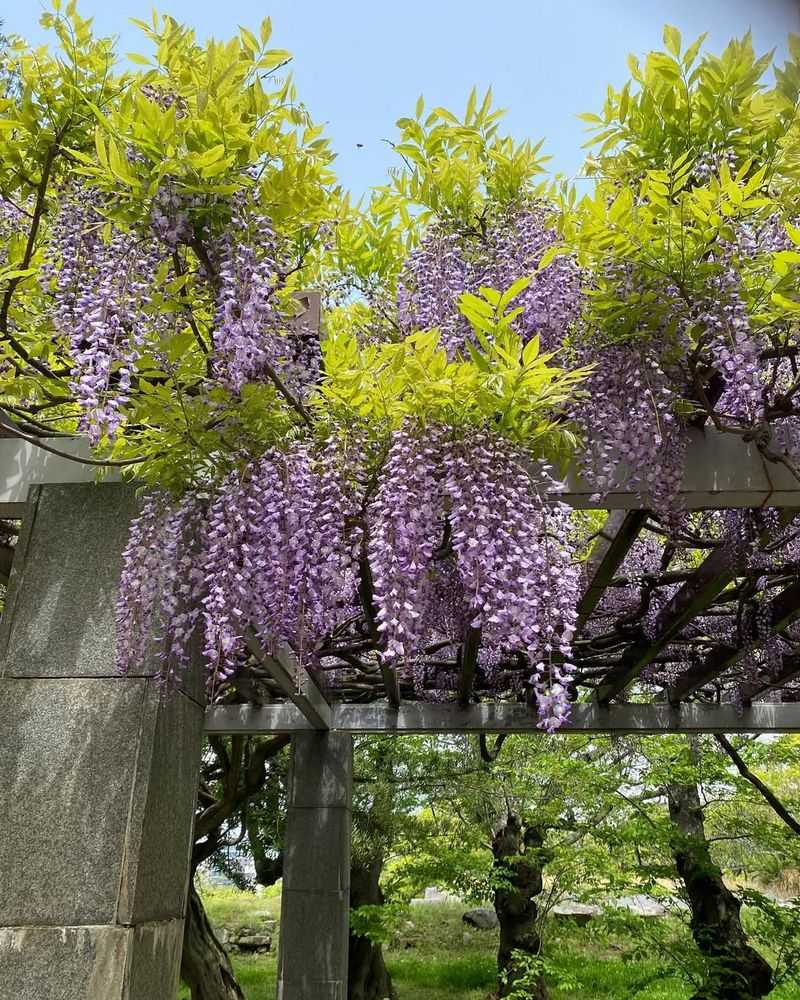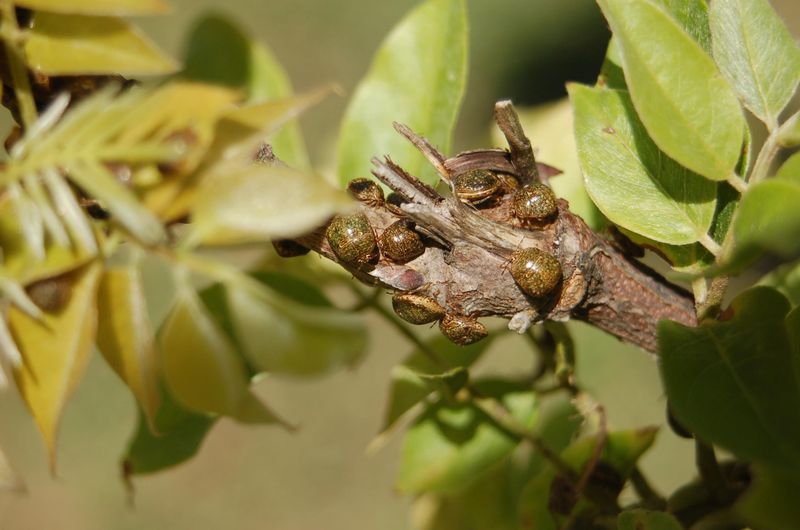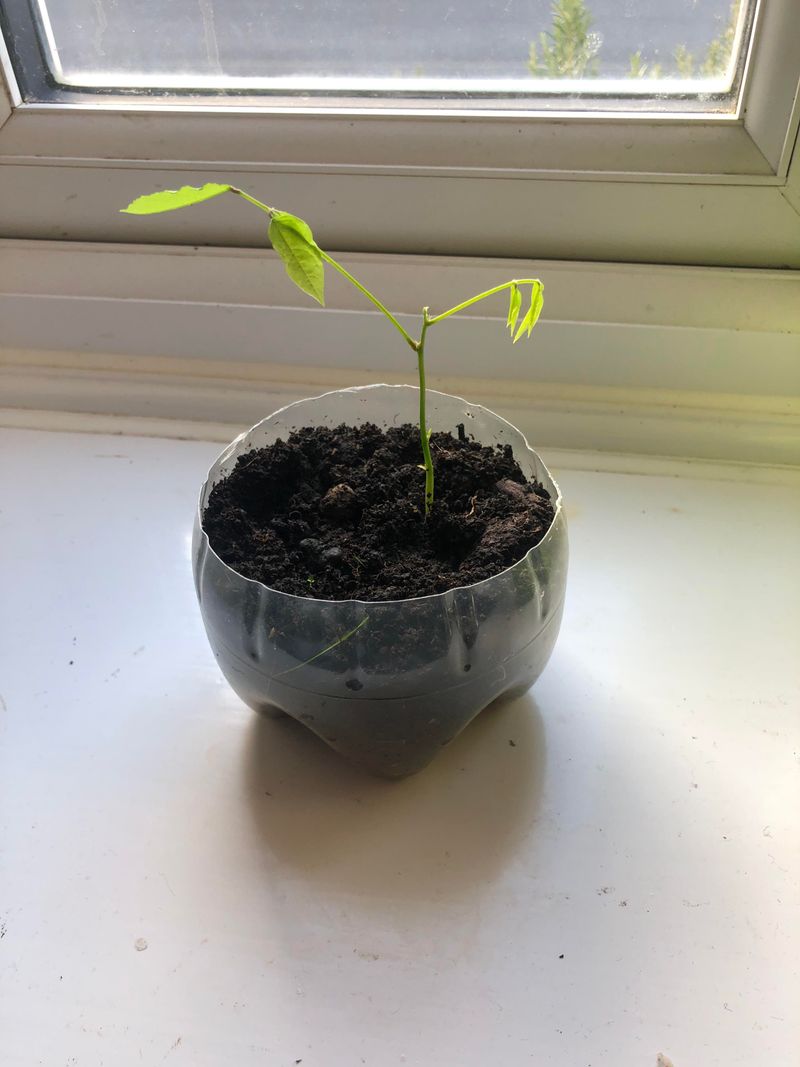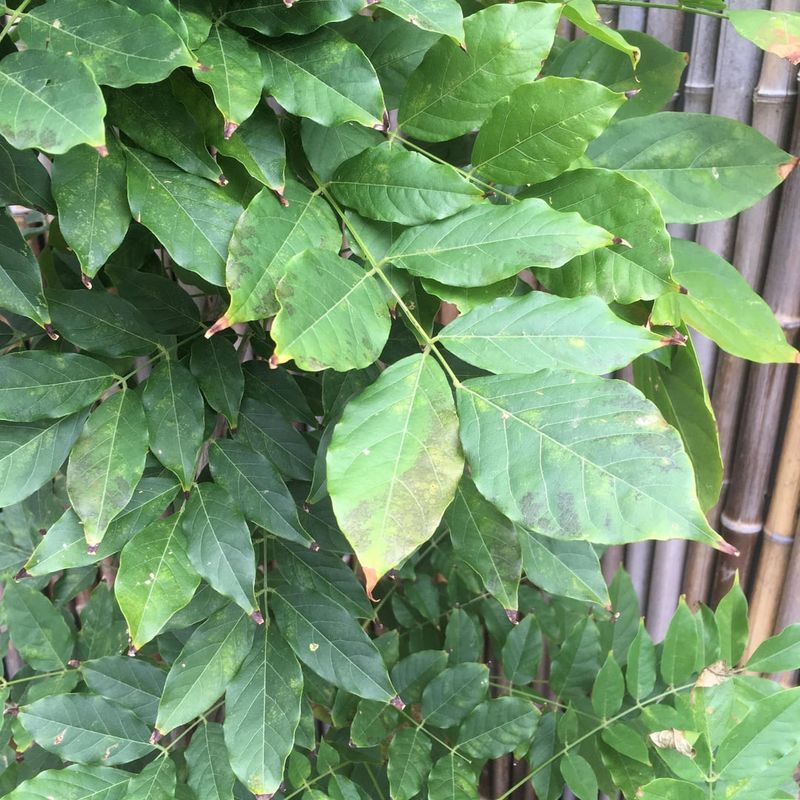There’s nothing more frustrating than a big, leafy wisteria vine… with zero flowers. You wait all year for those dreamy, cascading blooms—only to get silence come spring. Whether your wisteria is young, stressed, or just plain stubborn, there’s always a reason behind the no-show. From pruning mistakes to poor sunlight or even the wrong variety, the problem usually isn’t permanent—and the fix is often easier than you think. In this guide, we break down 21 possible reasons your wisteria isn’t blooming, along with simple, practical tips to get it back on track. Let’s troubleshoot that vine and turn green frustration into full-on flower power.
1. Too Young
Wisteria is a slow starter and can take years to bloom—especially if grown from seed. Many gardeners get impatient, but some varieties take up to 7 years (or more!).
The plant focuses on root and foliage growth first, so it simply isn’t ready to flower. If yours is still young, don’t panic—it’s just not mature yet.
Support healthy growth with regular watering and light pruning. Be patient, and the blooms will come when it’s good and ready.
2. Overfertilized
Too much fertilizer, especially nitrogen-rich types, can make your wisteria super leafy—but flowerless. It’s like giving it all the fuel to grow leaves but none for blooming.
This is common when wisteria is near lawns that get fertilized regularly. Cut back on the feeding, especially in early spring.
If you do fertilize, choose a low-nitrogen, high-phosphorus mix to encourage buds. Let the plant focus less on green growth and more on those stunning flowers.
3. Pruned Incorrectly
Wisteria loves a good haircut—but only the right kind. Over-pruning or cutting back the wrong branches can remove the very buds that were about to bloom.
This happens when people prune too aggressively or chop off the previous season’s growth. Focus on light pruning twice a year—once in winter, once in midsummer.
Leave some of the old wood intact since that’s where flower buds develop. Smart pruning means more flowers, less frustration.
4. Pruned at the Wrong Time
Timing is everything with wisteria pruning. Cut it back too early in the year and you may remove flower buds before they even had a chance.
Late winter and mid-summer are your golden windows. Avoid fall or early spring cuts when buds are forming.
When you prune correctly, you direct energy toward blooms instead of leafy chaos. Stick to a seasonal rhythm, and your wisteria will reward you.
5. Not Enough Sun
Wisteria is a full-sun kind of plant—it needs at least 6 hours a day to bloom its heart out. If it’s stuck in too much shade, you’ll get lots of leaves but no flowers.
Even partial shade can delay or reduce blooming. Try pruning back nearby trees or relocating your wisteria if possible.
More sunlight equals more blooms, it’s that simple. Brighten things up and let your plant soak in the rays.
6. Too Much Shade
Even though wisteria can survive in partial shade, it won’t bloom well without enough sunlight. Shade slows everything down, especially flower production.
It may look lush and green, but the buds just won’t form without those crucial hours of direct light. Observe your plant’s sun exposure throughout the day.
If trees or buildings are blocking light, consider trimming or relocating. Give your wisteria a sunnier spot, and you’ll see a big change come bloom time.
7. Poor Soil Drainage
Wisteria doesn’t like soggy roots. If your soil holds too much water, it stresses the plant and disrupts flower development.
You might notice yellowing leaves or stunted growth in addition to a lack of blooms. Improve drainage by amending soil with compost or planting on a slight mound.
Avoid overwatering, especially in clay-heavy soils. A well-drained base keeps roots happy—and happy roots lead to flowers.
8. Rootbound
When wisteria is planted in a pot or tight space, it can become rootbound and stressed. That means its roots are circling and crowding with nowhere to grow.
A rootbound plant focuses on survival, not flowering. If your wisteria is in a container, check the root ball and repot into a larger space if needed.
In-ground plants near walls or hardscapes may also need more breathing room. Free the roots, and the blooms will follow.
9. Late Frost Damage
Wisteria buds are sensitive to sudden cold snaps. A late frost can kill off flower buds just as they’re about to open.
You might not even notice until spring rolls in and your plant looks unusually quiet. Keep an eye on the forecast during early bud formation.
If frost is predicted, try covering the plant overnight with a breathable fabric. Protect those buds, and you’ll keep your bloom season alive.
10. Lack of Water
While wisteria is drought-tolerant once established, it still needs consistent watering, especially in early growth or hot seasons. Too little water = stressed plant = no blooms.
Dry soil during bud formation can cause flowers to drop before they open. Water deeply once or twice a week, depending on your weather.
Mulch around the base to keep moisture in. Hydrated vines are blooming vines—don’t let them dry out at the wrong time.
11. Excessive Water
Too much of a good thing can turn into a bloom-blocker. Overwatering leads to root rot, nutrient washout, and a stressed plant that puts growth over flowers.
If your soil stays soggy for days, your wisteria’s roots may be suffocating. Water only when the top few inches of soil are dry.
Use mulch to retain moisture—but not too much. Striking the balance helps roots breathe and buds form.
12. Recent Transplant
Moving wisteria can send it into shock, even if done carefully. After transplanting, the plant focuses on re-establishing roots instead of blooming.
It can take a year or more for it to settle in and flower again. Keep it well-watered, mulched, and avoid fertilizing too soon.
Let it adjust to its new home at its own pace. Patience now brings blooms later.
13. No Winter Chill
Wisteria needs a period of cold dormancy to trigger spring blooming. If your climate is too warm in winter, the plant may never “wake up” properly.
Mild winters can delay or prevent flower bud development altogether. Choose varieties better suited to your zone if this is a recurring issue.
While you can’t control the weather, planting in a slightly cooler microclimate can help. Some cold is essential for that spring payoff.
14. Incorrect Variety
Not all wisteria is created equal—some varieties take longer to bloom or don’t bloom well in certain regions. If you’re unsure of your plant’s type, that could be the issue.
Chinese and Japanese wisteria can be more finicky or slower than American varieties. Always check bloom time and climate compatibility when planting.
Local nurseries often carry varieties that are proven performers in your area. The right plant in the right place makes all the difference.
15. Weak Root System
A struggling root system means the plant can’t support healthy flower production. Poor soil, pests, or damage can all weaken the roots.
Without strong roots, all energy goes into basic survival, not blooming. Feed the soil with compost and avoid harsh fertilizers.
Water deeply but not too often to encourage deep, healthy roots. Healthy underground growth is the first step to big blooms up top.
16. Competing Plants Nearby
If your wisteria is surrounded by other aggressive plants, it may be fighting for sunlight, water, and nutrients. This competition weakens its ability to bloom.
Nearby trees, dense shrubs, or ground covers can hog the essentials. Clear the area around your wisteria to give it room to breathe and grow.
A 3–4 foot radius of open space is ideal. When your vine isn’t fighting for resources, it has the energy to show off.
17. Improper Training
Wisteria loves structure but needs guidance to bloom properly. Without training, it may grow wildly without putting energy into flowers.
Use a strong trellis, arbor, or pergola to direct its growth. Tie stems loosely and trim back runners that don’t follow the frame.
When trained properly, wisteria channels its energy into blooming zones. Structure brings both form and flowers.
18. Damaged Buds
Even if your wisteria is healthy, physical damage to flower buds can stop blooming cold. Hail, high winds, animals, or even rough pruning can all do harm.
You might not notice until bloom season comes and… nothing happens. Protect vulnerable buds in late winter and early spring.
Cover with breathable fabric during rough weather, and avoid brushing against new growth. Gentle care leads to gorgeous results.
19. Disease or Pests
Fungal diseases, root rot, or insect infestations can stress your plant and block flowering. You might see spots on leaves, wilting, or signs of chewing.
Check the plant regularly and treat problems early with natural or targeted remedies. Keep the area clean and avoid overwatering to reduce fungal risks.
Strong plants bloom—sick ones don’t. Healthy vines are the secret to healthy blooms.
20. Grown from Seed
Wisteria grown from seed can take a decade or more to bloom—if it ever does. Unlike grafted or nursery-raised plants, seed-grown vines don’t always perform.
They’re unpredictable, and sometimes they just stay leafy forever. If you’re unsure, consider replacing it with a known blooming variety.
Look for grafted plants labeled by type and bloom time. Skip the long wait and go for guaranteed flowers.
21. Stress from Weather Extremes
Extreme heat, cold, wind, or sudden changes in temperature can throw your wisteria into survival mode. When stressed, it holds back on blooming to protect itself.
You may notice dropped buds, curled leaves, or general lack of growth after a harsh season. Add mulch around the base to regulate soil temps and retain moisture.
Protect young plants from harsh wind or intense sun with temporary shade cloth. Consistent care helps your vine bounce back stronger.
A calm environment = a blooming wisteria.


